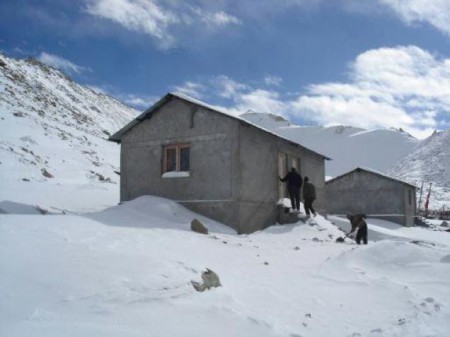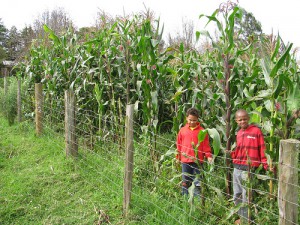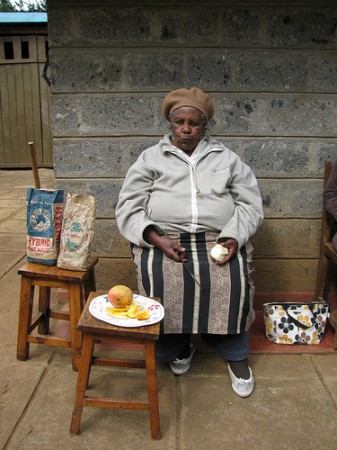- Breeding crop plants with deep roots: their role in sustainable carbon, nutrient and water sequestration. Good for soil structure, good for C sequestration, good for yields. What’s not to like?
- Ethnopharmacology, food production, nutrition and biodiversity conservation: Towards a sustainable future for indigenous peoples. Ethnopharmacologists need to think more generally about nutrition, and a lot more about conservation. And a view on the whole “wonder herb” thing from two botanical garden boffins who protest way too much as far as I’m concerned.
- Modelling predicts that heat stress, not drought, will increase vulnerability of wheat in Europe. It’s the heat, not the humidity. But maybe wild relatives can help.
- The Virtuous Manioc and the Horny Barbasco: Sublime and Grotesque Modes of Transformation in the Origin of Yanesha Plant Life. Maize is the result of a virgin birth, chili peppers of a fart. I’ll buy that.
- Is there a forest transition outside forests? Trajectories of farm trees and effects on ecosystem services in an agricultural landscape in Eastern Germany. Yes, but.
- Biodiversity and socioeconomic factors supporting farmers’ choice of wild edible trees in the agroforestry systems of Benin (West Africa). Those factors are: how important the trees are for food and medicine and how accessible they are. Still no cure for cancer. Anyway, here’s what ICRAF thinks should come next: domestication, natch.
- Pome fruit viruses at the Canadian Clonal Genebank and molecular characterization of Apple chlorotic leaf spot virus isolates. There’s a lot of them. Well that can’t be good, can it?
- A long-term view of rare plant reintroduction. A previous review is way too pessimistic.
An Indian Svalbard in the Himalayas
The Indian Council of Agricultural Research (ICAR) and Defence Research and Development Organization (DRDO) signed Memorandum of Agreement for conservation of plant genetic resources in the National Permafrost Repository at Chang-La, Leh, Ladakh (J&K).
So India now has its very own seed vault in the permafrost. The above is from an ICAR press release from a couple of days ago. But The Hindu reported on the Permafrost Repository as long ago as early last year. This photograph is from that article, so things may have changed since then.

It’s not altogether clear to me why India would wish to do this, when it can send safety duplicates of its material to Svalbard for free and under black box conditions, but anyway.
Nibbles: CWR, Agroecology, Innovation, Tree domestication, Ancient pigs, La vida locavore
- Our friends at CIAT showcase our friend Colin showcasing crop wild relatives.
- The latest from Olivier De Schutter on agroecology.
- How to identify and nurture those elusive agricultural entrepreneurs.
- So that they can help you with tree domestication, for example?
- Pigs in ancient Egypt.
- Is the whole local food thing being taken too far?
Pangusa njaa haraka
“We tell farmers that diversifying to more drought resistant crops is key to cope with the changing climate,” Leakey says. To encourage them, she offers a “Leldet Bouquet”: Instead of 2kg maize seeds costing 300 Kenyan shillings ($3), the farmer can get a mix of five seed packets with an equivalent weight of cowpeas, sorghum, beans, pigeon pea, millet and maize. The mix of crops in the “bouquet” is adapted to the farmer’s location.
That’s from an AlterNet story from a few days ago, but we blogged about the Leldet seed company back in June. Now, how cool would it be to get some genebank samples into those Leldet Bouquets? Or maybe even the mother-in-law’s maize…
A tale of genetic erosion narrowly averted
What causes genetic erosion? People in our business are way too fond of making lists of all the things that can possibly lead to a farmer abandoning a variety. But sometimes it’s just down to an accident. Take my mother-in-law. Please. No, but seriously, this is an interesting example of the law of unintended consequences. Bear with me. The mother-in-law grows some hybrid maize on her spread in the Limuru highlands of Kenya. Here she is with a bag of the stuff, which she likes, despite the recurrent cost, because of the large cobs.
But she also grows a local landrace which she says goes back to before independence. It doesn’t yield as much, but it has thick juicy stems, and she needs that for her cows. So she grows both the hybrid and the landrace, not mixed up in the same field, but often side by side. Would be interesting to look at the geneflow that’s been happening up there over the years, but that’s not the point of this story.
 The point of the story is in fact that she almost lost the landrace recently. What happened is that last year she came to visit us in Rome for a few months, and left the farm in the otherwise quite capable hands of her daughter-in-law. Problem is, Violet, unaware of the preciousness of the landrace seed, went and fed most of it to the family. Fortunately, a handful or so survived, and quickly went into the ground for multiplication when grandma returned. You can see it here above. A close-run thing indeed. She says she would have been very upset if she had lost that seed, and asked me whether I could get it into Svalbard. After all, is that not my boss holding some seeds in front of the Vault? Well, yes, but…
The point of the story is in fact that she almost lost the landrace recently. What happened is that last year she came to visit us in Rome for a few months, and left the farm in the otherwise quite capable hands of her daughter-in-law. Problem is, Violet, unaware of the preciousness of the landrace seed, went and fed most of it to the family. Fortunately, a handful or so survived, and quickly went into the ground for multiplication when grandma returned. You can see it here above. A close-run thing indeed. She says she would have been very upset if she had lost that seed, and asked me whether I could get it into Svalbard. After all, is that not my boss holding some seeds in front of the Vault? Well, yes, but…
